If you have been to the Trevi Fountain you probably understand how beautiful and impressive it is. You might not know that it’s design is Baroque which means it is full of symbolism! That said, what type of hidden stories and meaning can be found in its dramatic facade? Here is the symbolism and stories behind the Trevi Fountain written by a tour guide in Rome!
The Trevi Fountain – A Baroque Masterpiece
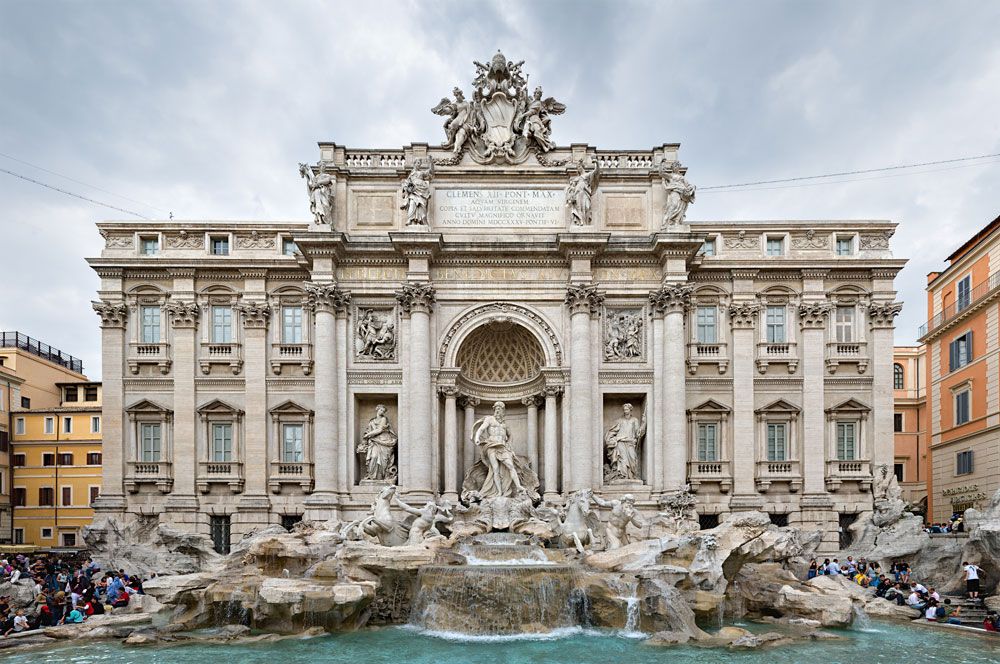
Free | View from Street
The word “Trevi” refers to the small piazza it sits in and the three roads that meet in that piazza. The number three in Italian is “tre” and road/street is “via”. Tre-via or Trevi. Fontana di Trevi or fountain of three roads.
The fountain is obviously outdoors and the facade of Palazzo Poli which is a museum that houses engravings and other important artifacts.
In the 17th century Gian Lorenzo Bernini set out to build the Trevi Fountain but the plan never went through. Over a hundred years later Nicola Salvi was given the commission by losing a competition for best drawing. Yes, Salvi lost to a Florentine Alessandro Galli.
Romans were not happy about a Florentine getting the commission and revolted. Eventually, Salvi was handed the job. Construction began in 1732 and was completed in 1762 eleven years after Salvi’s death. The job was handed to an architect Giuseppe Pannini who worked with multiple sculptors to finish the project.
This article is not meant to replace a tour, but make it better! History is much more interesting when you know some key points but there is always more to learn! Give the rest of this article a read then check out our Rome in a Day tour which includes the Trevi Fountain!
6. The Brutal Barber & Ace of Cups
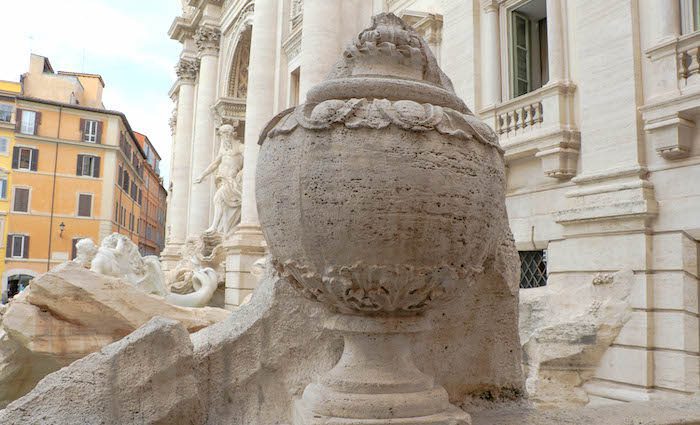
Apparently, when Nicola Salvi was building the fountain, there was a barbershop and a barber within the shop. The barber was not very happy about the construction of the fountain. The barber was short-sighted and didn’t like how the fountain was hurting his business and so he gave Salvi a lot of trouble. It must have been enough trouble to really piss Salvi off.
Salvi was a Baroque artist and Baroque artists love hidden stories and meaning. Creating beautiful works of art is just the first step for guys like Salvi. So, to add to the dimensions of the fountain, he built a vase resembling the Ace of Cups or Asso di Coppe from the Sicilian card game Scopa. The game has complexities, but winning is defined by a final moment where a player throws the final card down and wins.
When Salvi built the Asso di Coppe he built it so that it blocked the Barbershop from the view of anyone standing in front of the fountain – which drew huge crowds similar to today. I imagine when the Barber saw the completed fountain and realized what Salvi did, he felt like someone had just thrown down the Ace of Cups and cleared all the cards off the table.
The barber had been beaten.
5. Statues of Abundance of Health & Fruits
To the direct left and right of Oceanus, you will see two statues of women. Both statues represent the abundance that water brings – something we take for granted. Aqueducts bring more clean water than the Romans would ever need which allows them to grow crops and fruit, which was and is a luxury, as well as keep good health.
Both statues were sort of status symbols for Romans along with the fountain itself. “We have so much water that we even use it to decorate.
4. Statues of Abundance of Fruits, Fertility of Crops, Products of Autumn, and Joy of Prairie and Gardens.
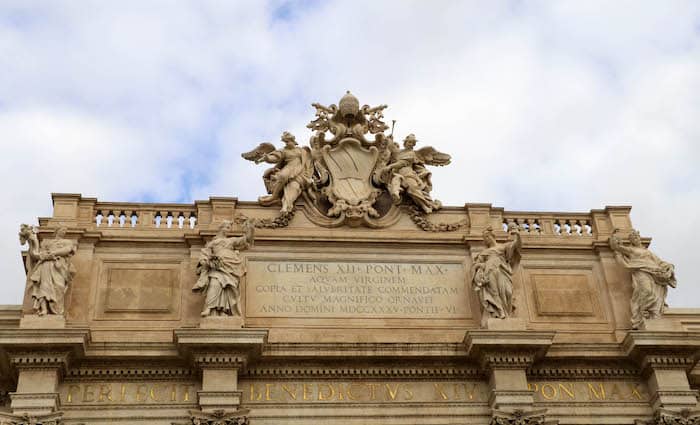
Following the same theme as above, these four statues represent the abundance water brings. From left to right you’ll see Abundance of Fruit which holds a horn of plenty. The Fertility of Crops which holds wheat ears. Products of Autumn which holds a cup and grapes. Finally Joy of Prarie and Gardens which is adorned with flowers. The last is the most iconic in my opinion. It represents the complete luxury of growing flowers for personal happiness.
3. The Aqua Virgo
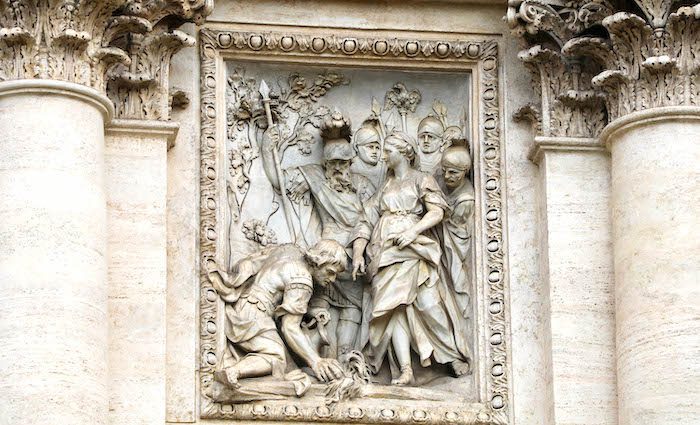
Apparently Marcus Agrippa was returning from a long battle on a hot summer day and his troops were dying of dehydration. They were in search of water but none was to be found!
A young girl (virgo in latin) appeared and showed them a source from where they could get fresh water. This new water revitalized the army and they returned to Rome. M. Agrippa went back looking for the young girl, but she was gone. He decided to build an aqueduct from the source that fed into Rome.
You can see this scene depicted in a relief sculpture located above Oceanus (centerpiece) to the right.
2. Relief of M. Agrippa Building Aqua Virgo
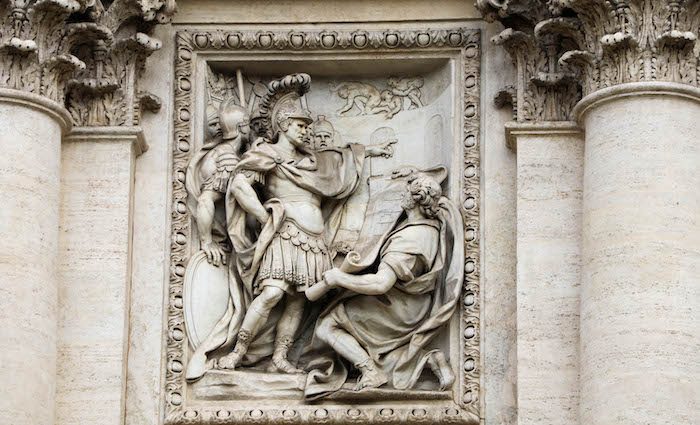
You will see another relief equilateral to the first relief. This pictures M. Agrippa approving architectural plans for the aqueduct and you can even see construction happening in the background.
Roman society was very impressive and still is today. They accomplished great feats with few technological resources. The concept and implementation of an aqueduct is a marvel of civil engineering and one of their crowning achievements.
1. Oceanus, God of the Sea
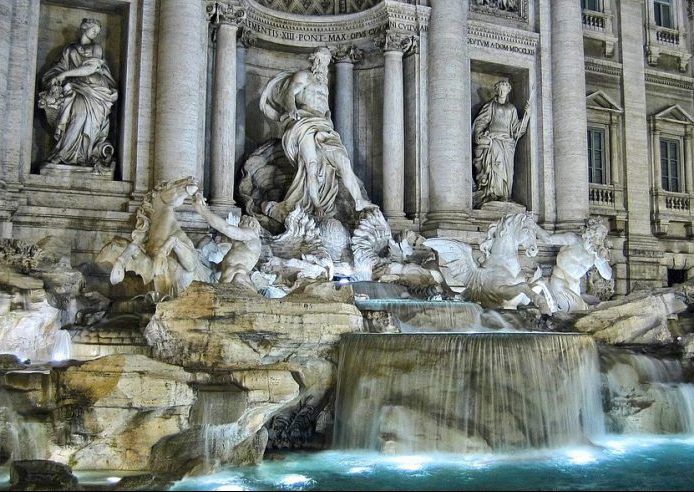
In the center of the fountain, you’ll find Oceanus, who was a Titan and the god of the sea. Titan gods were a generation of gods that came before many of the pagan gods famous today such as Zeus (Jupiter) or Apollo.The backstory behind the Titans is a long one, but what is important is that Oceanus is the main statue and he controls the sea.
Oceanus rides a shell, like any good god of the sea, which is led by two Tritons (think Mer-man from Zoolander). Don’t confuse him with Neptune. Gods are easily identifiable by whoever is around them (think posse). While Oceanus is accompanied by two Tritons, Neptune would have a trident and a dolphin in tow.
The Triton to Oceanus’ right (our left) represents the harshness or roughness of the sea. To his left (our right) you can see the calmness and tranquility of the sea.
Looking for a bite to eat? Check out our annually updated list of the best places to eat near the Trevi Fountain in Rome!

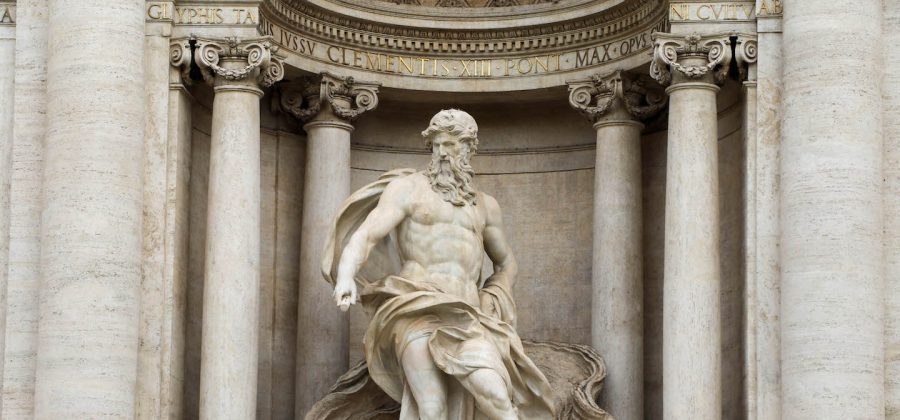

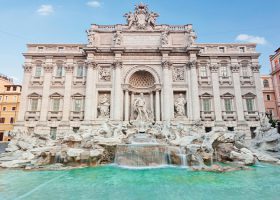
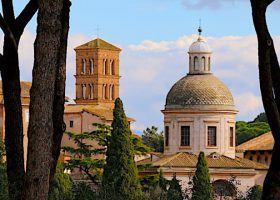
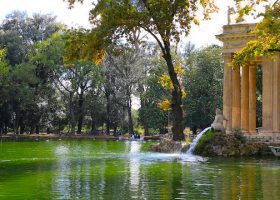
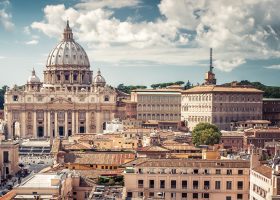
Leave a Comment